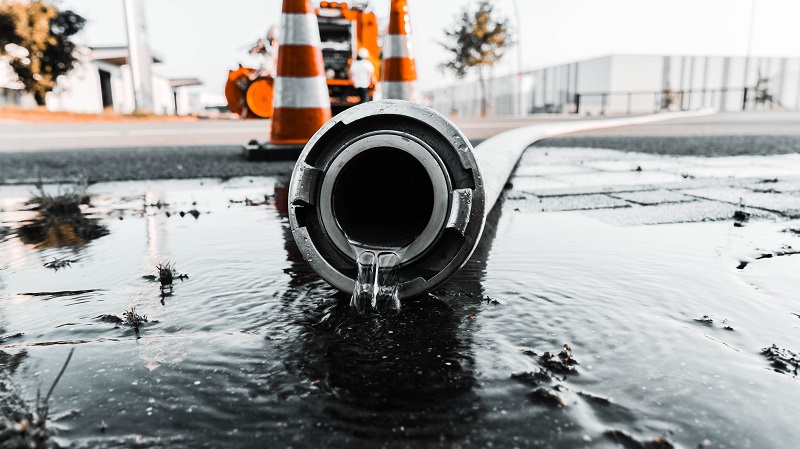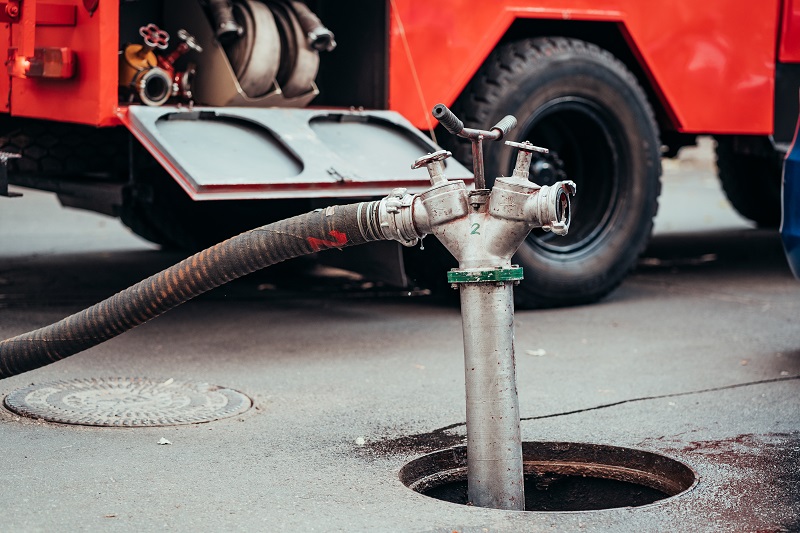Have you ever worried about hidden leaks in your home or business, or wondered if there’s a way to fix damaged pipes without digging up your property? Are you curious about the latest methods that can keep your plumbing healthy in the long run? If so, pipe relining might be just what you need.
In this blog post, we’ll investigate how you can make the most of pipe relining and why proper maintenance matters so much. You’ll discover practical tips, learn how to spot potential problems, and see how simple upkeep can save you thousands of dollars in the future. It’s all about helping you feel confident that your pipes will stand the test of time.
By the end of this article, you’ll have a clear plan for maintaining your newly relined pipes. We’ll explore everything from regular inspections to monitoring water pressure and using safe chemicals. From homes in Sydney to commercial properties in Brisbane, these tips will apply across Australia. Let’s jump right in and uncover how to keep those relined pipes running smoothly.

A selective closeup shot of a gray pipe with water coming out its hole
Understanding Pipe Relining
Pipe relining is a groundbreaking method that repairs damaged or ageing pipes from the inside. It’s different from traditional digging and pipe replacement because it doesn’t require massive trenches or an extended timeframe. Instead, specialists use resin-based liners that bond to your existing pipes, forming a hard and durable new surface within.
What Is Pipe Relining?
Pipe relining is also known as trenchless pipe rehabilitation. Professionals insert a flexible tube coated in a special resin into the damaged pipe. Then, after inflating the tube, the resin hardens against the pipe walls. Once cured, this resin layer creates a strong, seamless pathway for your water or wastewater. You get the benefits of a full repair without having to rip up your landscaping or floors.
This innovative method is an ideal choice for Australian homes and businesses aiming to minimise disruptions. It’s quicker than old-school excavation and can address common issues like cracks, root intrusion, and corrosion. Plus, it works well across various pipe materials, including PVC, cast iron, and clay.
Common Pipe Issues in Australia
Many pipe problems arise in Australia’s diverse climates and varying soil conditions. In some places, clay soil expands and contracts, putting pressure on underground pipes. Elsewhere, trees with extensive root systems can force their way through fragile pipe joints. In coastal regions, salt and moisture can rust older metal pipes.
Another concern is the number of ageing houses and commercial structures throughout the country. Old galvanised or cast-iron pipes often corrode, leading to leaks or blockages. These issues can be incredibly frustrating, especially if they lead to slow drains or foul smells. Luckily, pipe relining tackles these concerns by sealing up vulnerabilities and extending pipe life.
Benefits of Trenchless Technology
Trenchless technology like pipe relining avoids major digging, which means reduced labour costs and less time spent on big projects. You also save on landscaping expenses, since you won’t have to restore your lawn, driveway, or patio afterward. This can be a huge relief if you have a beautifully manicured garden or valuable paving around your home.
What’s more, the resin lining is strong enough to handle high water pressure, making it suitable for a variety of settings. By going trenchless, you also benefit from using a greener approach, as it generates less waste and minimises carbon emissions from heavy machinery. It’s a win-win for anyone who wants a fast, cost-effective, and eco-friendly solution.
Why Maintenance Is Crucial
Keeping your relined pipes in top shape is vital for long-running performance. Regular upkeep ensures that your investment doesn’t go to waste and that you can enjoy decades of trouble-free service. Most homeowners think that once pipes are relined, the job is done, but consistent check-ups are still important to prevent any minor issues from escalating.
Preventing Costly Repairs
Routine maintenance is all about spotting problems before they snowball. Even the most robust relined system can face wear and tear if neglected. By scheduling inspections, you can catch signs of damage or blockages early, which allows you to fix them on the spot. This approach not only minimises stress but can also save you heaps of money in the long haul.
Imagine ignoring a tiny crack until it becomes a full-blown leak. Then you’re dealing with water damage to your walls and floors, plus the potential for mould growth. Pipe relining repairs are typically straightforward when caught early, so it’s wise to stay on top of any unusual smells, slow drains, or changes in water pressure.
Extending Pipe Lifespan
Relined pipes often come with a lifespan of decades, but that doesn’t happen by accident. Following best practices, such as mindful cleaning and avoiding harsh chemicals, can help keep your pipes working well beyond their estimated life expectancy. When you treat your plumbing with care, it pays you back with fewer breakdowns and less hassle.
Not only does proper maintenance protect your property’s value, it also reduces the likelihood of emergency repairs. Australian homeowners know that emergency plumbing calls can add up quickly. By being proactive, you’ll set yourself up for many years of smooth water flow without the usual disruption of digging or pipe replacements.
Ideal Maintenance Schedule
Companies specialising in pipe relining often recommend a yearly check-up. Some property owners opt for an inspection every other year, especially if they haven’t noticed any warning signs. However, having a professional look at your pipes each year can be a simple step to guard against any hidden cracks or blockages.
Regular cleanings can also work wonders. Clearing out any build-up, whether from debris or mineral deposits, helps prevent clogs. It’s typically a quick and painless process, but it can have a huge impact on how well your water flows. By adopting an annual or biannual maintenance schedule, you’ll have an easier time keeping your relined pipes in perfect working order.

Fire Hydrant In Use During a Structure Fire
5 Tips for Effective Pipe Relining Maintenance
Relined pipes are built to handle day-to-day usage, but they’ll perform even better if you keep a few simple steps in mind. Whether you own a suburban home or manage a commercial space, these tips will help protect your investment.
Tip 1: Regular Inspections and Cleaning
One of the easiest ways to maintain relined pipes is by scheduling regular inspections. A professional plumber can use modern camera technology to identify any small cracks or areas of concern long before they become big problems. If you prefer a hands-on approach, keep an eye out for warning signs like slow drainage, unpleasant smells, or gurgling sounds.
In addition, periodic cleaning prevents mineral build-up and other debris from clinging to the pipe walls. You might use a gentle water jetting service or mechanical cleaning tools to keep everything clear. This regular upkeep can stave off harsher problems, so you don’t have to deal with unexpected bursts or unpleasant overflows.
Tip 2: Monitoring Water Pressure
Water pressure that’s too high can put unnecessary strain on your pipe lining. It can even lead to leaks or rupture in extreme cases. Keep tabs on your water pressure by installing a pressure gauge or asking a plumber to check it during routine maintenance. If the pressure is above recommended levels—often around 500-600 kPa—you might need a pressure-reducing valve.
Pay attention to subtle changes. If you’ve noticed a sudden drop in flow or if your taps splutter when turned on, something could be amiss. Monitoring water pressure is a quick step that can go a long way in extending the life of your relined pipes.
Tip 3: Safe Chemical Usage
We all love squeaky-clean sinks and toilets, but using harsh drain cleaners or strong chemicals can worsen pipe conditions. While the resin liner is tough, it’s still wise to avoid pouring aggressive substances down your drains. Instead, opt for milder cleaning solutions or oxygen-based products that clear clogs without corroding the lining.
In a commercial setting, make sure your employees or tenants are aware of safe disposal methods. Dumping grease straight from the pan into the sink, for instance, can solidify in the pipes over time, undermining the lining. Choosing gentler chemicals and disposing of waste responsibly can significantly improve the longevity of your entire plumbing system.
Tip 4: Professional Assessment and Repairs
Even if you feel confident doing small fixes yourself, there’s no substitute for a professional assessment. Qualified plumbers have the specialised gear needed to identify issues that the untrained eye might miss. They can test water quality, inspect pipe joints, and suggest minor tweaks before they escalate into big complications.
If anything needs a quick fix—such as sealing a tiny crack or reinforcing a connection—a professional can handle it safely and promptly. Additionally, they’ll make sure you’re following best practices for maintenance. By lining up an annual or biannual check-up, you give your pipes the best chance of performing reliably under constant use.
Tip 5: Tailored Maintenance Plans for Australian Homes and Businesses
Australia’s environment spans everything from humid, tropical climates to dry, arid regions. That’s why opting for a tailored maintenance plan is a smart move. For example, if you live in Queensland, heavy rainfall might affect your sewer lines differently compared to a property in Western Australia. A customised approach factors in average temperatures, soil composition, and local weather patterns.
Likewise, commercial buildings might need more frequent inspections if they handle large volumes of water daily. Restaurants often deal with grease, while certain industries flush chemicals into their wastewater lines. Working with a knowledgeable plumber to create a tailored plan means you’ll get advice that’s specific to your local area and usage needs.
Conclusion
The bottom line is that proactive maintenance can make a world of difference in protecting your pipe relining investment. By scheduling regular inspections, keeping water pressure in check, and avoiding overly harsh chemicals, you’re giving your pipes the best chance at a long and trouble-free life. It’s all about balancing everyday use with periodic care so that your plumbing system remains a reliable fixture in your home or business.
Maintaining relined pipes doesn’t have to be complicated. A little attention goes a long way, and professional check-ups ensure you spot any hidden concerns early. Plus, by tailoring your maintenance plan to fit local conditions—like dense tree roots in certain areas or unique weather patterns in others—you’ll address specific challenges right at their source.
Ultimately, pipe relining offers a durable, trenchless option for repairing and renewing your underground systems. When you combine this modern technology with consistent maintenance, you free yourself from the fear of ongoing leaks, clogged drains, and sky-high repair costs. Here’s to many years of smooth-flowing pipes and the peace of mind that comes with knowing your home or business is well looked after.




